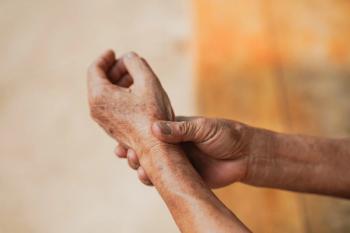
Studies Show Decrease in Opioid Prescription in States With Medical, Recreational Marijuana Laws
Two separate studies published Monday in JAMA Internal Medicine suggest that marijuana has a role to play in helping patients cut back on prescription opioids. One study looked at prescribing patterns for opioids in Medicare Part D and the implementation of state medical marijuana laws. The other looked at Medicaid prescription data from 2011 to 2016.
Two separate studies published Monday in JAMA Internal Medicine suggest that marijuana has a role to play in helping patients cut back on prescription opioids.
One study looked at prescribing patterns for opioids in Medicare Part D and the implementation of state medical marijuana laws.1
The other looked at Medicaid prescription data from 2011 to 2016 and found that both medical and recreational marijuana laws were associated with annual reductions in opioid prescribing rates of 5.88% and 6.38%, respectively.2
In the Medicare Part D study, researchers looked at the number of prescriptions filled for all opioids as a group and for the categories of opioids by state and state-level medical cannabis laws (MCL) from 2010 through 2015.
Medicare Part D prescriptions for opioids fell by 2.21 million daily doses filled per year (95% CI, −4.15 to −0.27) when laws went into effect in a given state. The type of law implemented proved key, with greater reductions in opioid prescriptions observed in states with more structured laws that increased access to medical cannabis.
Prescriptions for opioids fell by 3.74 million daily doses per year (95% CI, −5.95 to −1.54) when medical cannabis dispensaries opened, but only by 1.79 million daily doses per year (95% CI, −3.36 to −0.22) when states only offered allowances for home growers.
Results varied by type of opioid, with statistically significant estimated negative associations observed for hydrocodone and morphine. Hydrocodone use fell 17.4%, by 2.320 million daily doses in states with dispensary-based medical laws (95% CI, −3.782 to −0.859; P = .002). Use of hydrocodone fell by 9.4%, by 1.256 million daily doses, when medical laws were limited to home cultivation only (95% CI, −2.319 to −0.193; P = .02).
Morphine use decreased by 0.361 million daily doses (or 20.7%) filled with dispensary-based MCLs (95% CI, −0.718 to −0.005; P = .047).
Currently, 15 states allow at least some patients to grow a predetermined amount of marijuana at home. Since 2009, every state that has passed an MCL (there are 24 such states) has included some form of regulated dispensary program.
These studies focused on 2 groups of interest to researchers. Recent reports suggest that marijuana use is rising fastest in the over-50 population—the group most likely to have chronic pain conditions for which the evidence for marijuana is strongest. Last year, the National Academies of Sciences, Engineering, and Medicine released a review that said there is “conclusive evidence” that marijuana can be used safely and effectively to treat chronic pain.
In addition, Medicaid enrollees are considered a high-risk population for chronic pain, opioid use disorder, and opioid overdose, and the researchers said “marijuana liberalization may serve as a component of a comprehensive package to tackle the opioid epidemic.”
These studies all had several limits. Their populations were not generalizable—Medicare Part D and Medicaid consists primarily of seniors 65 and older, and/or the disabled or low income. There are also other factors that could determine lower rates of opioid use, and researchers don’t know if patients avoided or reduced their opioid intake because they had access to marijuana.
Writing in an accompanying editorial,3 Kevin P. Hill, MD, MHS, and Andrew J. Saxon, MD, said the results line up with "preclinical research showing that cannabinoid and opioid receptor systems mediate common signaling pathways central to clinical issues of tolerance, dependence, and addiction." This supports anecdotal evidence from patients who describe a decreased need for opioids for chronic pain after starting medical marijuana. However, they said
Drug overdoses, mostly from opioids, killed 63,632 in 2016, up 21.5% from 2015, according to the CDC.
References
1. Bradford AC, Bradford WD, Abraham A, et al. Association between US state medical cannabis laws and opioid prescribing in the Medicare Part D population [published online April 2, 2018]. JAMA Intern Med. doi:10.1001/jamainternmed.2018.0266.
2. Wen H, Hockenberry JM. Association of medical and adult-use marijuana laws with opioid prescribing for Medicaid enrollees [published online April 2, 2018]. JAMA Intern Med. doi:10.1001/jamainternmed.2018.1007.
3. Hill KP, Saxon AJ. The role of cannabis legalization in the opioid crisis [published online April 2, 2018]. JAMA Intern Med.
Newsletter
Stay ahead of policy, cost, and value—subscribe to AJMC for expert insights at the intersection of clinical care and health economics.

















































